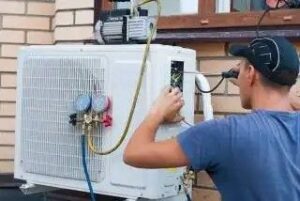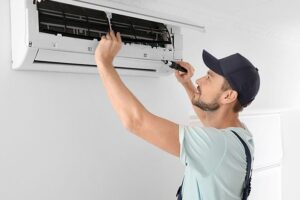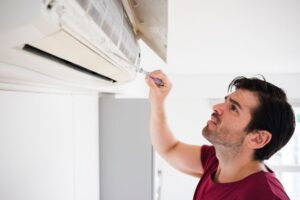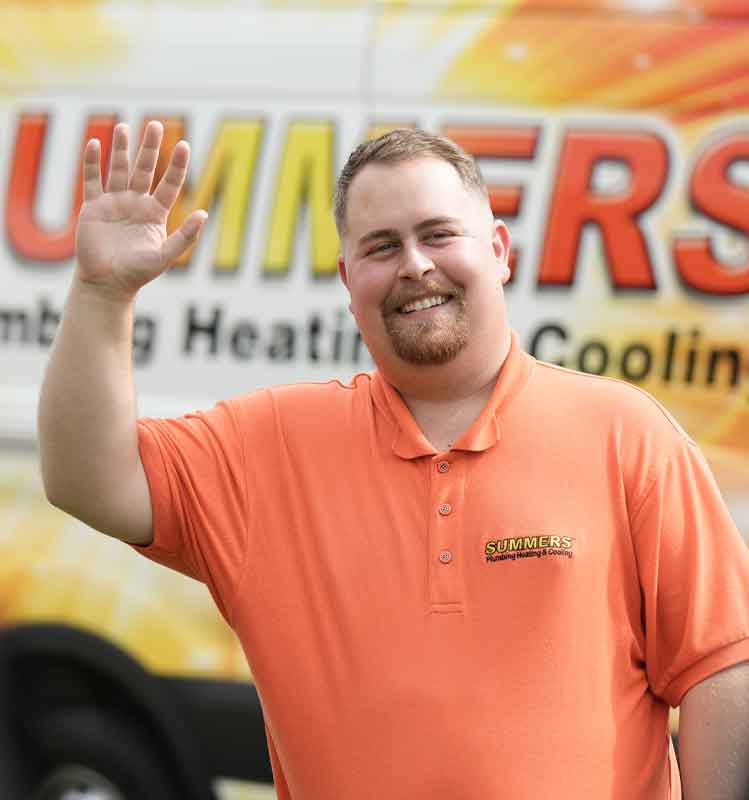September is Baby Safety Month, and there’s no better time to touch on this very important topic: how to protect your little one from indoor air pollution. As a parent, ensuring your baby’s well-being and health is a top priority. Because poor indoor air quality is a hidden threat, it often gets overlooked when you think of all the ways to “baby-proof” your home. However, it’s important to ensure you’re breathing in healthy air. Here are the top ways you can protect your baby from indoor air pollution.
1. Maintain Clean Air Ducts and Filters
Regular HVAC maintenance, including cleaning air ducts and replacing air filters, is very important. Dust, pet dander, and other particles can accumulate, circulating pollutants throughout your home. To ensure your baby breathes clean air, make sure your HVAC maintenance becomes a priority each year.
2. Choose Baby-Safe Cleaning Products
Traditional cleaning products often emit VOCs (volatile organic compounds) that can adversely affect indoor air quality. Opt for non-toxic, baby-safe cleaning alternatives or consider making your own using natural ingredients like vinegar and baking soda. VOCs contain a variety of chemicals that not only impact your health, but can also harm the air your breathe.
3. Make Ventilation a Priority
Proper ventilation helps reduce indoor air pollution. Open windows when weather allows to let fresh air in. “When weather allows” is an important concept to remember, though. If the weather isn’t good outside, then it won’t do your indoor environment any good. Using exhaust fans in kitchens and bathrooms when cooking or bathing can also help expel pollutants.
4. Control Humidity Levels
Maintain optimal humidity levels to prevent mold growth and dust mites. Dehumidifiers can be beneficial in damp areas, as well. According to the United States Environmental Protection Agency, your indoor humidity levels should be between 30% and 50%.
5. Make Your Home a “No Smoking” Zone
Make your home a strict no-smoking zone. Secondhand smoke is a significant indoor air pollutant and is particularly harmful to infants.
6. Use Air Purifiers or Filtration Systems
Consider using high-efficiency particulate air (HEPA) filters or air purifiers with activated carbon filters to trap particles and VOCs, promoting cleaner air.
7. Select Safe Furniture and Paint
Just like with cleaning products, choose baby-friendly furniture and paints that emit minimal VOCs. Look for labels indicating low-VOC or VOC-free products.
8. Regular Cleaning and Dusting
Frequent cleaning and dusting help reduce the buildup of allergens and pollutants. Use a damp cloth or microfiber duster to trap particles rather than dispersing them into the air.
9. Create Pet Zones
We love our furry friends, but they can be a main source of poor indoor air quality unfortunately. If you have pets, designate specific areas in your home where they can roam freely. Regular grooming and vacuuming can minimize pet dander in the air.
10. Monitor Carbon Monoxide Levels
Install carbon monoxide detectors near sleeping areas and fuel-burning appliances to protect your family from this odorless, colorless gas. This is also another reason it’s important to schedule routine maintenance. Technicians will be able to inspect your unit and check for any possible concerning leaks you need to be aware of.
Contact Summers Plumbing, Heating & Cooling Today for All Your Indoor Air Quality Needs in Parts of Indiana, Ohio, and Illinois
Prioritizing your baby’s health involves creating a safe haven from indoor air pollutants. By following these proactive steps and seeking professional assistance from Summers Plumbing, Heating & Cooling, you’re taking significant strides toward ensuring your baby breathes clean, fresh air. Remember, a healthy indoor environment sets the stage for your baby’s happy and thriving development. Summers is proud to offer a variety of HVAC and indoor air quality solutions. Contact us today to learn more.





